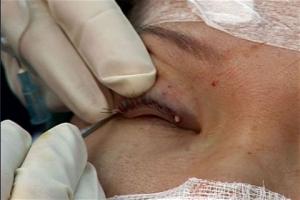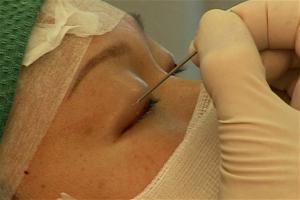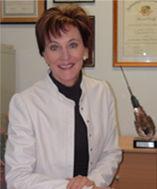 Eyelash transplantation has generated a lot of media and public interest in recent months.
Eyelash transplantation has generated a lot of media and public interest in recent months.
The likely catalyst for this attention is an eyelash transplantation workshop hosted by the International Society of Hair Restoration Surgery in Los Angeles, California in October 2006.
As the main presenter at this workshop I was able to show fellow physicians how the refined surgical techniques which have given natural looking hair transplants to thousands of Australian men can be applied to create lustrous thick eyelashes.
Eyelash transplants, performed under local anaesthetic, are created by harvesting hair follicles from the back of the scalp and then transplanting them into the eyelid.
The procedure was originally developed by German physician Dr Franz Krusius about 90 years ago. A more recent development of placing single hairs into the eyelid was described by Brazilian physician Dr Marcelo Gandelman about 25 years ago.
Up until recently eyelash transplants have been restricted to people who are willing to undergo lengthy surgical procedures for a relatively sparse covering of lashes on the upper eye lid.
My minimally invasive technique, developed here in Australia over 2.5 years, offers less time in surgery while creating thicker and more natural looking lashes than the previous method.
While the eyelash transplant technique is attracting widespread interest throughout the world and is being dubbed by some media as the next “must have cosmetic procedure”, I do not believe it should be entered into lightly.
Those who have the procedure must be committed to a lifetime grooming regimen which consists of daily curling and monthly trimming of the eyelashes.
This is not for everyone.
My main motivation to develop the new technique was to help burns victims and people who have lost their eyelashes through chemotherapy, radiotherapy, genetic problems and accident or other trauma.
In my experience, people who have lost their eyelashes as a result of an accident or medical condition are more motivated to adhere to the grooming regime for their new lashes.
My eyelash transplant technique enables physicians to transplant 60 hairs in just an hour and is suitable for both the upper and lower eyelids.
Under previous surgical methods the physician will take up to three hours to transplant 20 lashes into the eye lid.
 Direction and curl was unpredictable with these methods.
Direction and curl was unpredictable with these methods.
While the more commonly practiced method transplants just one lash at a time, I use a series of coronal incisions (sideways) to replant multiple lashes and create a thick overlapping effect.
I find this method gives me much more control over the direction of the replanted hairs to ensure the lashes are all curling in the same manner. The end result is the creation of thicker and far more natural looking lashes.
The use of coronal incisions draws on the same principle that has enabled me to create the appearance of more lustrous thicker looking hair in hair transplant patients.
I make a shallow incision into the eyelid which is angled in the same way as I do with hair transplants. I then insert grafts that contain two to three hairs directly into these pre-made incisions.
I have performed the eyelash transplant surgery on around 30 patients at my clinics in Sydney, Melbourne and Perth and recovery time after a procedure has been relatively quick for them.
It usually only takes around three days for the swelling to go down.
As I said earlier, I would not advise anyone to consider the procedure lightly. I cannot emphasise enough of the need for meticulous grooming to keep the new lashes in optimum condition.
Patients who have realistic expectations and are highly motivated to maintain their eyelashes make ideal candidates for the procedure.
I also warn patients that the transplanted lashes may initially go into resting phase, known as telogen for about 90 days, before they begin to grow.
Another big concern for me is that greater public awareness of the eyelash transplant procedure will result in it being sought out by people suffering from Body Dysmorphic Disorder (BDD).
People with BDD are not suitable for the procedure and I carefully screen patients to ensure I do not treat them.
BDD – a mental disorder associated with a preoccupation with a slight or imagined physical anomaly – is present in just one per cent of the general population.
However, the occurrence of BDD is greater among cosmetic surgery patients with an estimated 20 percent of these patients being affected by the disorder.
Patients with BDD tend to focus on the tiniest imperfection and are unlikely to be happy with the treatment.
Like all forms of hair loss a medical diagnosis should be sought before a patient commits to an eyelash transplant.
Eyelash loss in men and women can be due to an accident, systemic disease, a congenital inability to grow eyelashes or the self-inflicted obsessive plucking disorder trichotillomania.




